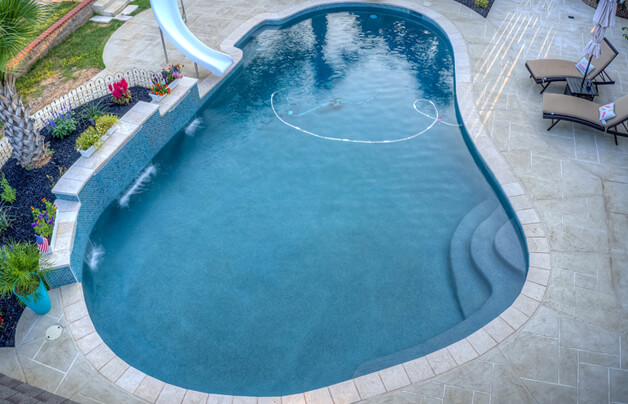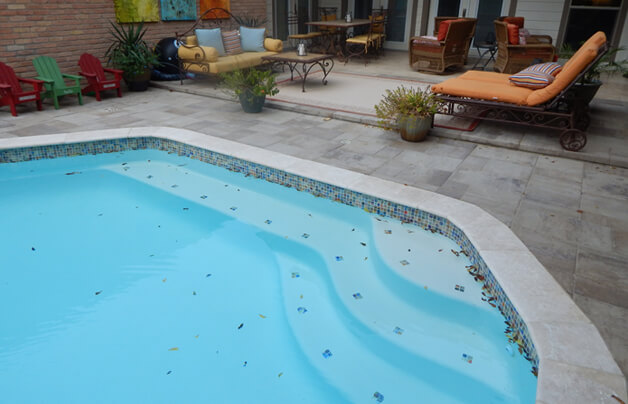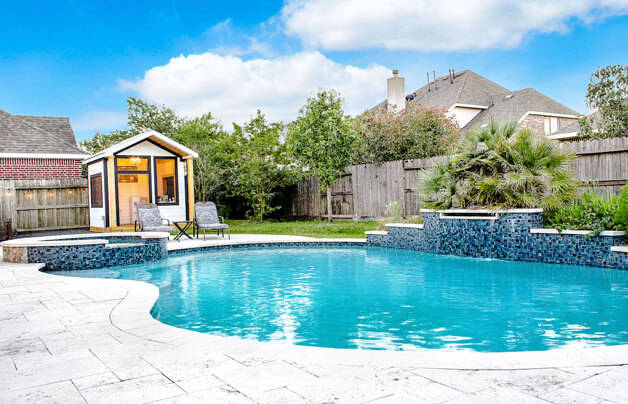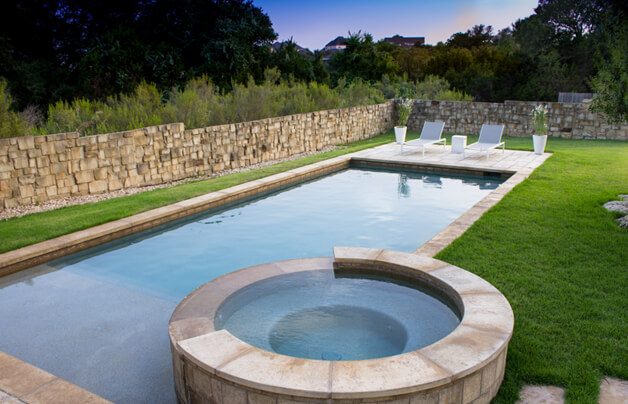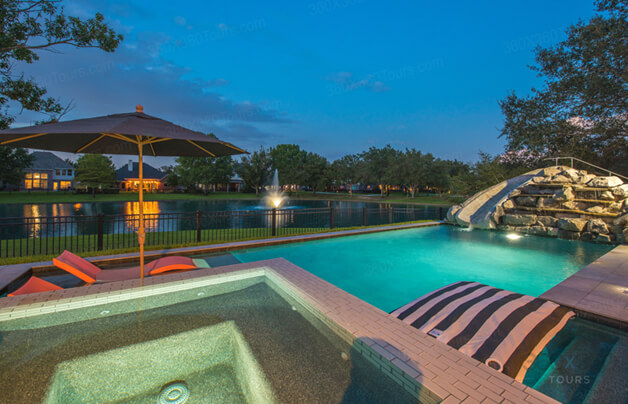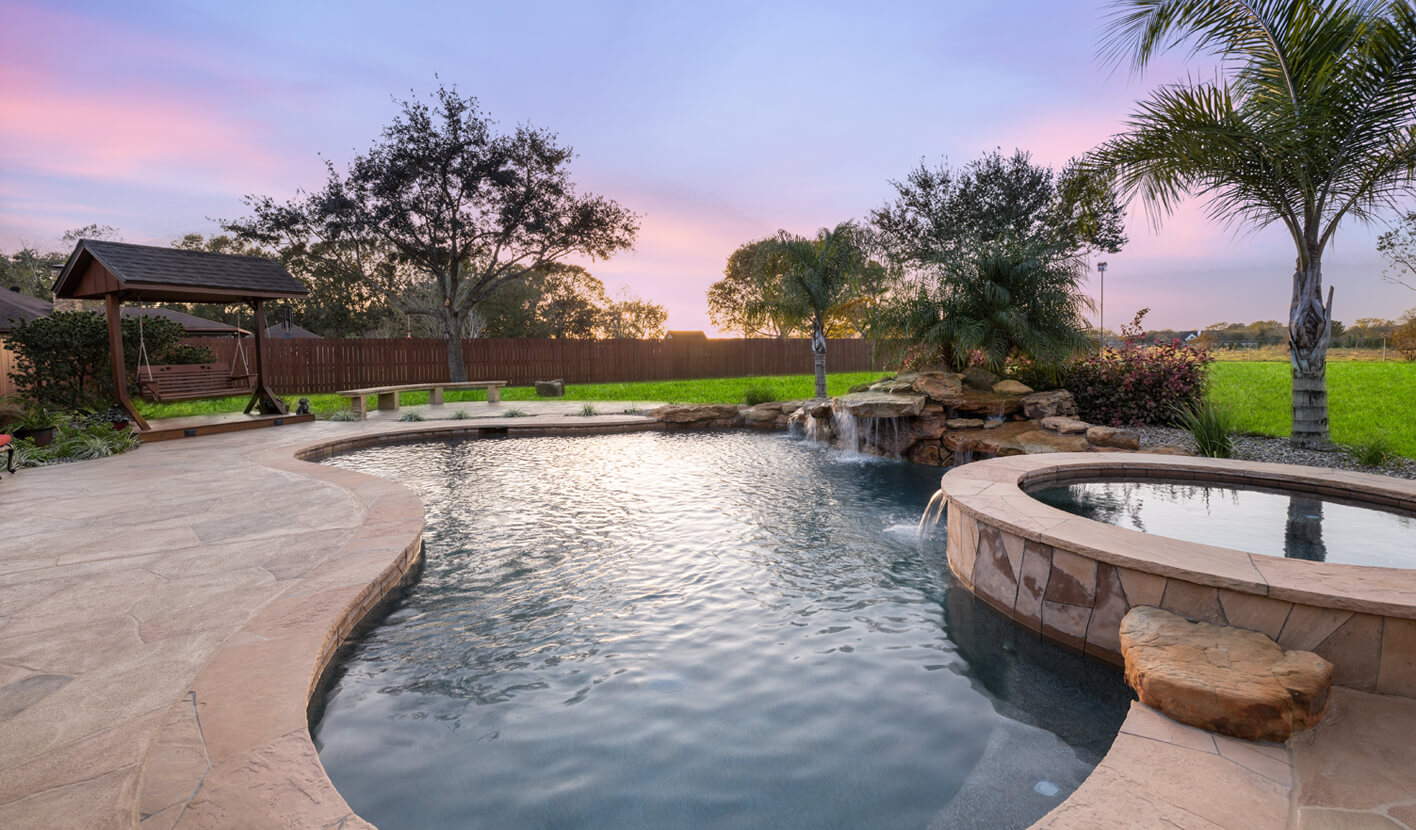
Pool Resurfacing Design & Build
Whether resurfacing a pool deck or pool shell, we use only the best materials.
What is pool resurfacing?
Pool resurfacing is the process of renovating and refreshing the interior surface of a swimming pool or pool deck, typically by removing the old finish and applying a new one, to enhance its appearance, durability, and water-tightness.
Schedule FREE ConsultationThere’s some general confusion regarding what “resurfacing” actually means. In the pool industry, we think of it in terms of replastering the pool. Often, our clients are referencing their pool deck. It’s because of this, we’ll attempt to describe both on this page. There are 3 levels of pool plaster: white marcite, quartz, and pebble. There are 4 general levels of pool deck resurfacing: stained, spray decking, stamped overlay products, and Carvestone.

Allied is a member of the International Code Council, and follows their outlined codes for building, construction, and ethical industry standards.

Allied Outdoor Solutions was named 2021 Best Pick by Best Pick Reports' annual awards for the 5th year in a row.
Pool Resurfacing Installation Process

1. Surface Prep
Regardless of the selected pool, we’ll start by removing the existing plaster and creating room for the new application.
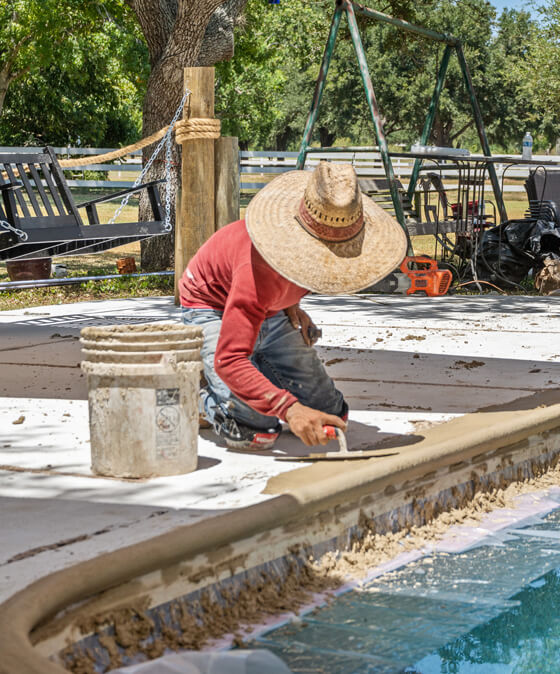
2. Tailoring
We begin by listening as your pool needs to be built specifically for the way you intend to use the space.
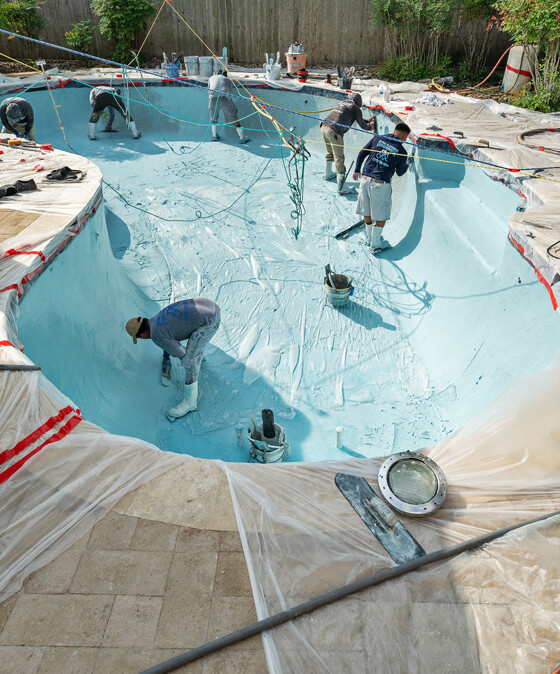
3. Crafting
Once we’re plastering the pool itself, the final result will come down to our ability to execute on a successful application.
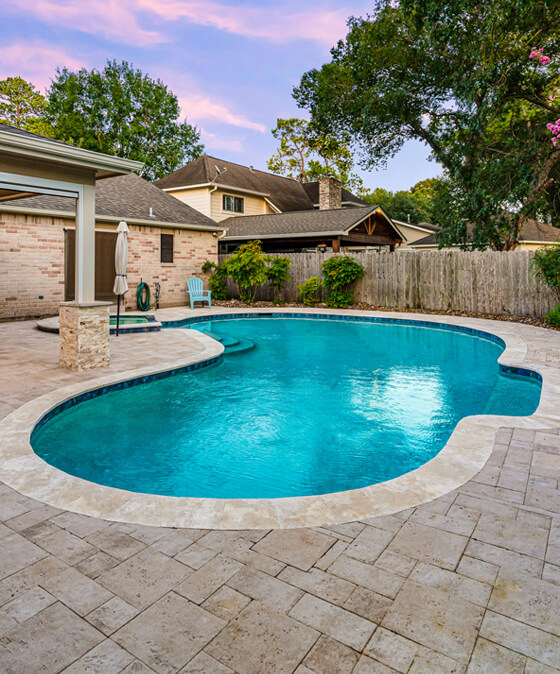
4. Walkthrough
There’s not much better than the first time you dive into your new pool. We’re glad to help you get there.
Pool Resurfacing Costs
Frequently Asked Questions
You’ll begin to see bare areas where the plaster is losing its bond to your shell.
It depends largely on your water chemistry. white marcite plaster will last over a decade and a pebble finish can last longer than that.
This cannot be answered without advising on your specific area. We often hear that a full pool remodel is priced similarly to the original pool construction.
This comes down to the installation process. Most often, it’s a failure to achieve a solid bond that creates issues down the road.
It’s often obvious to the naked eye but generally every 10-15 years.
The four most common methods of resurfacing are white marcite plaster, quartz plaster, pebble plaster and tile.

